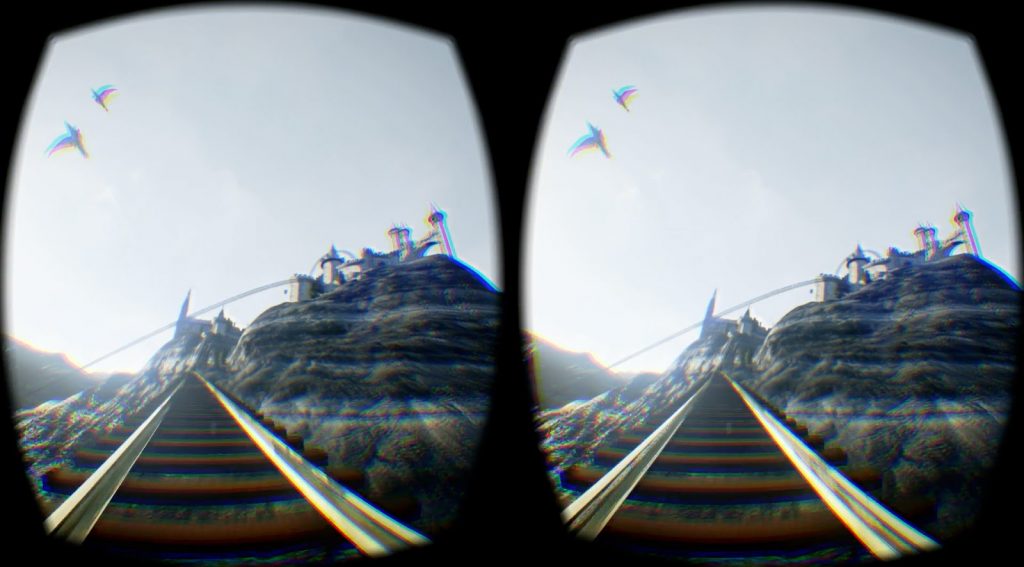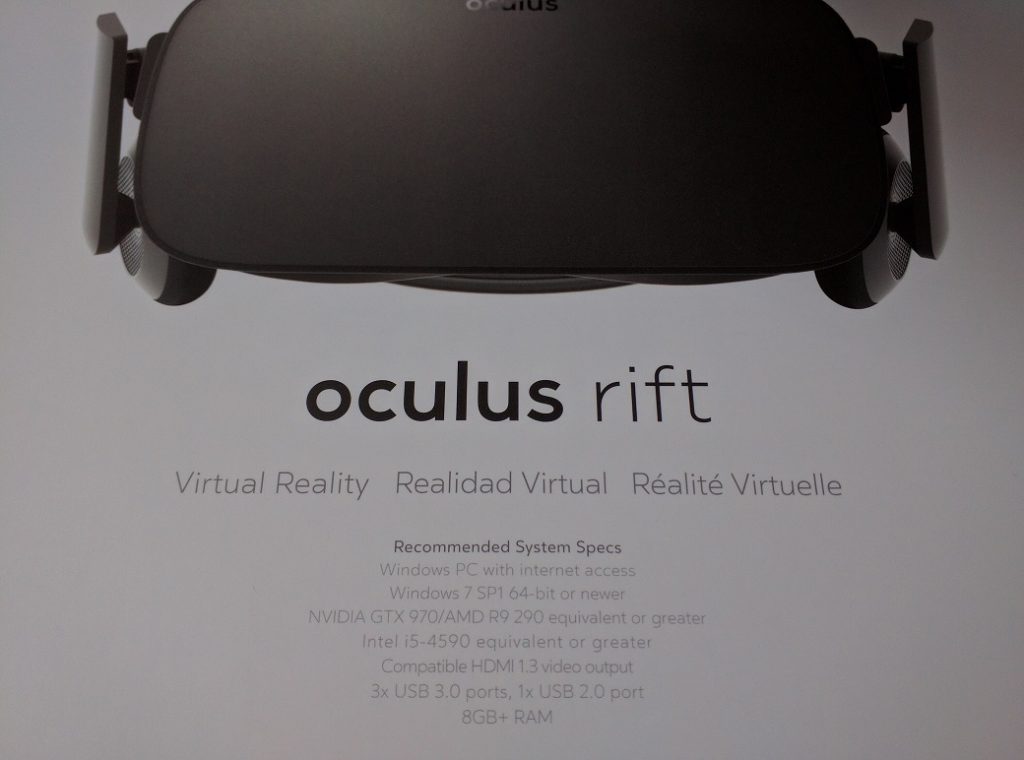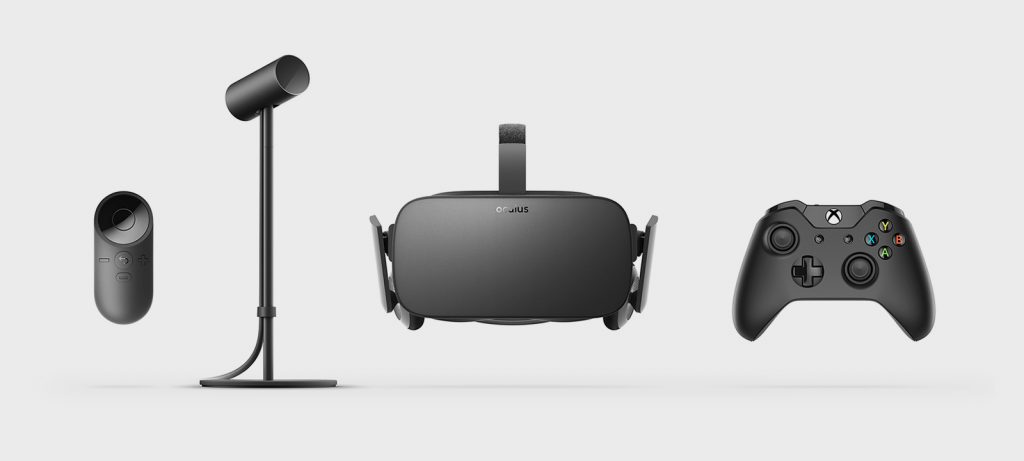Virtual reality. Like the internet, it's something that mankind conceived of in the earliest days of modern technology, even if it wouldn't be realized until much later. For the internet, 'later' came a solid thirty years ago, although it wouldn't reach mainstream popularity for another ten. With the advent of the Oculus Rift, that's where we are again: the dark ages of something world-changing in its formative stages, impressive for where it is now, but most exciting for where it's going to be.
As it stands, today's virtual reality is in an awkward place—premium and refined on the outside, packing the best that current technology can offer on the inside, and yet perhaps jarringly crude to actually experience. And yet even with that crudeness, wearing an Oculus Rift is still one of the most exciting and compelling virtual experiences you can have to date. Nothing even needs to be happening around you in order for the virtual environment to be completely enthralling, and in fact, the more time you spend sitting still or walking around and just taking it all in, the more convincing your surroundings will become.
What's not so good: the optics
But the optics and displays alike are far from ideal. While the Oculus Rift uses dual 1080x1200 displays for a total resolution of 2160x1200—significantly more pixels than your average TV or monitor—when blown to massive proportions and stretched all around you the end result comes off looking more like 480p than HD. And all that magnification doesn't come without a cost, either. While the lenses in the Rift do a great job at saving you from any eye strain, they suffer from a rather narrow 'sweet-spot' effect where only the center of your vision is especially clean. I choose that word carefully, because clarity is not so much an issue as the quality of the image you're looking at. The raw precision of a flatscreen just isn't there, as if you're wearing a pair of dirty glasses. It's not so much an issue of light flares, or 'god rays' as the VR community likes to call them, although they are present to a minor degree. The reality is just that 2k is not a high enough resolution for VR, and optics is not a solved problem yet. 100 degrees' field of vision is nowhere near close to enough to completely occupy the human eye, but with more degrees comes the need for more pixels, and with more pixels comes the need for more processing power to generate convincing imagery at higher resolutions while still hitting as close to 90 FPS as possible.

An outdated, but still relevant example of what it's like to look through the Oculus Rift. Chromatic aberration may be mostly a solved problem, but the image quality is still far from perfect.
What is good: the experience
But let these concerns temper your expectations for current-gen VR, not drive you away from it. While it's obvious how today's virtual reality will be laughable compared to the VR of tomorrow, it's hard to be especially disappointed in its shortcomings while staring down a life-size T-Rex or piloting a space fighter or watching a movie on the moon. The depth of these experiences is analogous to having a dream, to the point that during my first experience with the Rift any time I communicated with anyone else in the room my voice felt distant and disconnected, like talking in my sleep. There's a sheer scale to everything in VR that is impossible to convey on traditional displays. And unlike 3D TV, the Oculus Rift has no ghosting or crosstalk upsetting the 3D image whatsoever. In fact, it's not 3D in the stereotypical 'in-your-face' kind of way at all. Because you're looking at two isolated screens through two very specialized lenses your eyes perceive the virtual world very naturally, which is extremely important in achieving a sense of 'presence.' And let me tell you: that's far, far more than just a marketing buzz-word. Indeed, it's the selling point.
No matter how far short the Rift's screens and optics may fall, they still succeed at delivering the sensation of truly being in a virtual space. It's a subjective experience, and largely dependent on the software, but not self-induced or placebo. While walking around the room and carefully feeling along the floor and walls for any real-world obstructions my brain still accepted the virtual world despite its clear inconsistencies with my other senses. As it turns out, the Rift handles standing experiences very well, and it's only going to get better once Oculus Touch arrives. Presence is no gimmick, and its applications extend way beyond gaming. Education, communication, virtual travel, even pure fantasy with no objectives at all are all equally appealing uses of the hardware, and I can't wait to see more.
What's really good: the hardware
And all that is to say little about the hardware itself. While you can see the unboxing video at the head of this post for that, there's something to be said about the presentation of the Oculus Rift as a product on top of as an experience. In a way it's one of those things that, like visual effects in a feature film, is done correctly when no one notices, and in that sense Oculus has set the bar very high. The Rift headset is extremely adjustable and yet still feels very solid, largely thanks to the rigid head mount along the back and sides of the unit. Adjusting all the straps and settings for your specific face takes time to get right, but once it's there, you know it. There is still a certain weight to the device but in the middle of a VR experience it is easily forgotten. It's also possible to adjust the Rift so that none of that weight rests on your cheek bones, at which point you escape both the feeling of the headset slipping and getting a red ring imprinted on your skin when you take the headset off. There is still some room for improvement here, as the center strap tends to leave your hair parted down the middle, but with some extra padding to diffuse the pressure it seems this would be an easy enough problem to solve even by users if not Oculus itself. Let the third-party addons commence!
One thing you probably won't want to change, however, is the built-in audio solution. Oculus clearly put a lot of effort into its headphone design, and while they are very easy to remove very few people will have any reason to do so. The sound is rich and detailed, like sitting in a movie theater, and coupled with 3D audio technology and a virtual cinema you'll feel like that's exactly where you are. But beyond sound quality alone there's value simply in the convenience of having audio built directly onto the headset. There's no extra cables to get yourself tangled up in, no need to worry about them falling off or falling out, and the over-the-ear style allows you to remain connected to the real world and immersed—I'm sorry, present—in the virtual one at the same time.
The other hardware included with the Rift is equally spiffy. The essential tracking station will give you an approximately 100-degree by 70-degree cone up to 4 meters long for tracking the headset in. It's compact and looks sleek and is even detachable to be used with standard tripod mounts in virtually limitless configurations. Then there's the Oculus Remote, a simple but surprisingly useful little input device consisting of only a navigation ring, a back button, volume controls, and an Oculus Home button. In western territories Microsoft also saw to it for Oculus to include an Xbox One controller and wireless adapter in the box for more advanced input—a welcome gesture, even if a bit unnecessary. And what a box it is that all this comes in! Give your product that kind of delivery treatment and it'll make even $600 seem cheap.
In other words, Oculus spared no expense here to make a profit on headsets. Instead it's clear that they're pushing the asking price for its every penny, and while it may be a bit steeper than many would've liked, after experiencing the Rift for myself I can safely say I'm glad it's not less than it is. A cheaper headset would inevitably mean a worse or more limited experience, and with VR in its infancy Oculus couldn't afford to release a product that doesn't take full advantage of the technology available right now. But they did, and while it may alienate some potential buyers in the early days, refusing to compromise the Rift was absolutely the right choice for the long term.
What might not be so good: disorientation
And yes, it's fair to say that for now VR is not for everyone. Pricing and the cost of a VR-ready PC aside, the Rift is dead simple to set up and use, but getting there not the problem. It's once you're in that you'll discover what your tolerance for VR is like, and there's a real possibility that you'll walk away feeling rather dizzy. VR experiences vary in intensity of course, and Oculus has employed a comfort rating scheme for every piece of software available in Oculus Home to keep users informed of what they're getting themselves into, but suffice it to say if only the tamest of VR experiences sits well with you you'll miss out on a lot of the best the Rift has to offer. Building tolerance for VR is completely possible for many people, but requires exposure to uncomfortable experiences and hours of feeling disoriented while your brain learns to accept new forms of motion. That requires a lot of dedication to the medium that some people just won't have, and unfortunately this is one area that future generations of VR headsets won't be able to improve much upon.
What's the verdict?
But is it worth it? Is being completely immersed in virtual worlds worth staring through pixels and optical artifacts and taking the time to build up tolerance for VR motion? You better believe it is. With genuinely real-feeling experiences comes genuine reactions, both conscious and subconscious. It's impossible not to drop your jaw at an awe-inspiring new experience or feel a little giddy at watching familiar events unfold all around you as if you were really there. Virtual reality is here, it's a powerful medium, and it's just getting started. If 2016 is the year of VR, I can't wait to see what the future holds.











